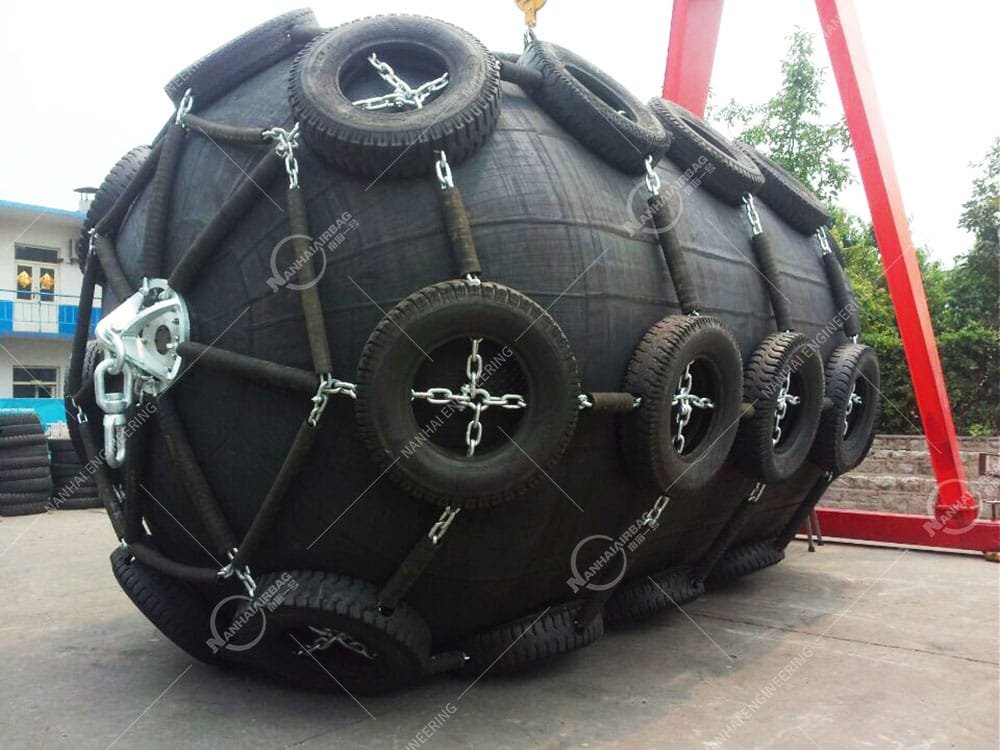Tugboat Fenders for Heavy-Duty Marine Operations
07/11/2025Factors affecting the service life of pneumatic fenders
07/11/2025Independent components affecting pneumatic rubber fenders
Why Is This Topic Necessary and Urgent?
In today’s fast-paced maritime industry, ports and ships face increasing operational demands—from high traffic, heavier loads, to unpredictable weather. Imagine a major oil tanker approaching a dock at high tide. Without reliable pneumatic rubber fenders, even a tiny miscalculation could cost millions in damage, downtime, and safety. That’s why NANHAI—and every ship or dock operator—must prioritise understanding the independent components that ensure fender performance, reliability, and longevity.

What Makes Up a High-Performance Pneumatic Rubber Fender?
1. Outer Rubber Layer – This abrasion-resistant cover shields the fender from corrosion, UV light, and physical damage, ensuring stability and long service life.
2. Tyre-Cord Reinforcement Layer – Reinforced with synthetic tyre-cord or steel wire mesh, this structural layer enables the fender to withstand high compression and maintain pressure integrity.
3. Inner Rubber Layer (Air Bladder) – An airtight layer that holds the compressed air essential for energy absorption during berthing.
4. Air Valve System – High-quality brass or synthetic valves regulate internal pressure, allowing operators to fine-tune the fender’s stiffness or softness for different vessels and tides.
5. Flange Connection (Ball or Cage Type) – Secure end fittings—either ball or cage flanges—ensure safe and durable attachment to vessels or docks.
6. Protective Nets & Chains – Heavy-duty tyre nets, chain nets, or sling chains protect against punctures and evenly distribute loads, especially important under continuous stress.
How These Components Combine to Deliver Performance
- The inner bladder, filled with compressed air, offers unmatched elasticity and low hull pressure—ideal for delicate vessel surfaces.
- Reinforcement layers resist deformation and improve resilience under heavy loads.
- Outer skins and valves ensure durability against environmental conditions and operational demands.
- Protective nets and chains act as a failsafe, extending the fender’s lifespan while safeguarding vessels and infrastructure.
FAQ – pneumatic rubber fenders
1. What are the main components of a pneumatic rubber fender?
A pneumatic rubber fender typically consists of three main rubber layers: an outer protective rubber layer, a synthetic tyre cord-reinforced layer, and an inner air-tight rubber bladder. It also includes an air valve system, flange connection, and protective tyre-chain nets.
2. What can shorten the life of a marine fender?
Factors such as frequent berthing friction, overloading, improper docking angles, and exposure to UV rays, saltwater, and pollutants can cause the fender’s rubber layers to wear and age more quickly.
3. Why is tyre cord reinforcement important in ship fenders?
Tyre cord layers provide high tensile strength and allow the fender to absorb large amounts of energy without deforming. It ensures the fender performs under heavy compression loads during vessel berthing.
4. Can pneumatic rubber fenders be repaired?
Yes. One of the advantages of NANHAI pneumatic fenders is that they are easy to inspect, patch, and repair, even after years of use. This extends their service life and reduces the total cost of ownership.
5. What’s the difference between pneumatic and foam-filled fenders?
Pneumatic fenders use compressed air for energy absorption and are lighter and easier to deploy. Foam-filled fenders are solid and more impact-resistant, often used in high-traffic or rough environments.
6. How should I choose between sling-type and net-type pneumatic rubber fenders?
Sling type is simpler and used for less demanding environments, while net-type fenders (with tyre and chain nets) are ideal for rougher conditions and more frequent docking, as they offer better impact distribution and surface protection.
Why Choose NANHAI?
Powered by deep technical expertise and commitment to quality, NANHAI delivers custom-designed marine fender solutions that outperform industry standards. Our pneumatic rubber fenders are engineered with:
- Premium NR/SBR rubber blends for abrasion and UV resistance
- High-strength tyre-cord layers for reinforced structural durability
- BV-certified valves and flange systems for operational safety
- Tailored tyre nets and chain options to match your unique berthing needs
Explore NANHAI’s full lineup of marine fenders to protect your vessels, infrastructure—and your bottom line.
